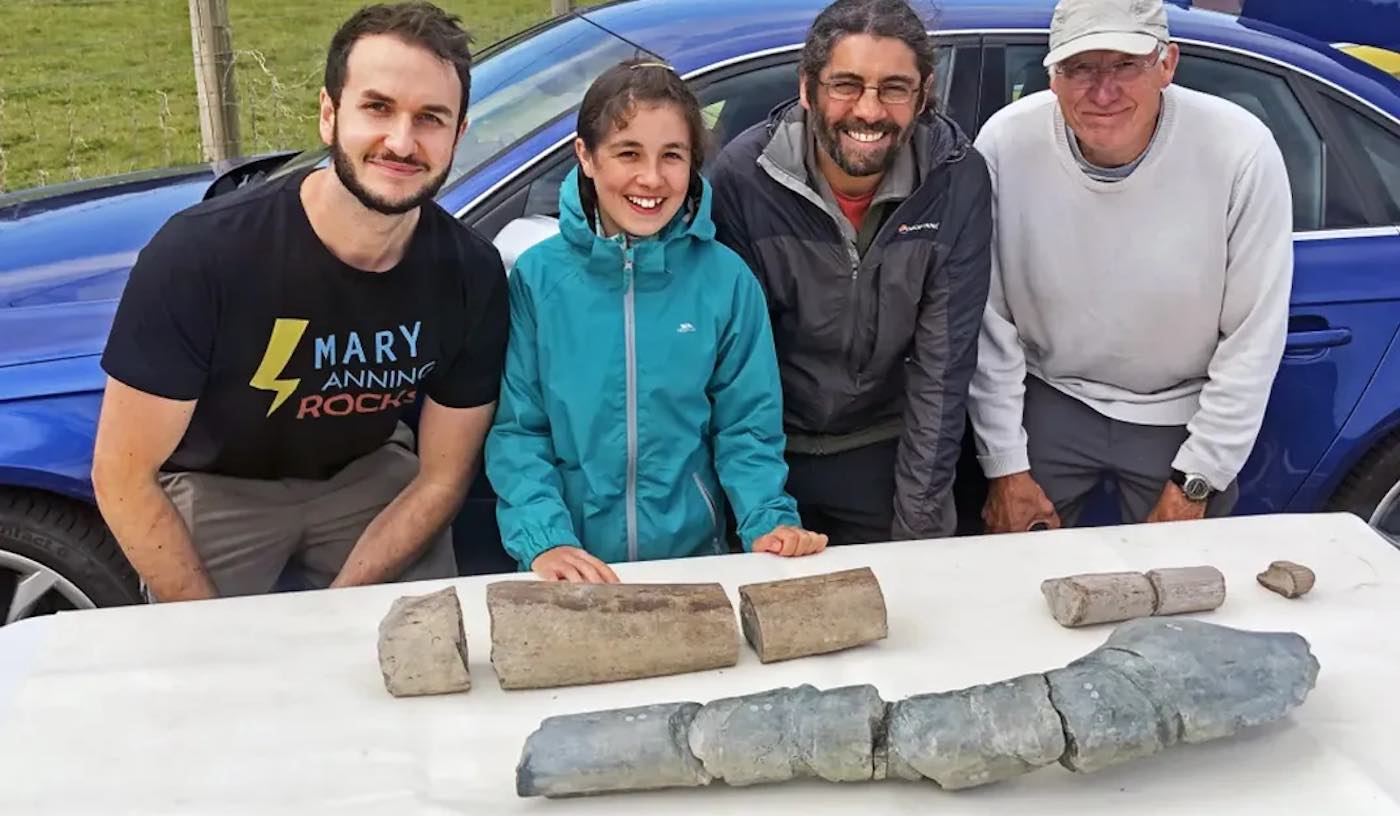
While these fossils may not look like much, they are part of the jawbone of what is now believed to be the largest marine reptile ever to swim in the seas.
The beast could have measured 82 feet long—as big as a humpback whale—but with a long narrow mouth bristling with teeth used to hunt prey much larger than krill.
Discovered in a bed of rocks near the River Severn in England, they were found in 2020 by an 11-year-old fossil-hunting enthusiast named Ruby Reynolds who frequented the area with her father, Justin.
After finding bone fragments embedded in the rock, one of which was around 8 inches long, they contacted a fossil hunter they knew named Paul de la Salle and paleontologist Dean Lomax at the University of Bristol.
As the three returned to the area in 2022, they found additional fragments that allowed them to piece together the animal’s jawbone. When they were finished, they knew it belonged to an ichthyosaur, but the jawbone itself was seven feet long.
ANOTHER GIANT SEA LIZARD: One of the Largest ‘Sea Dragon’ Fossils Ever Found in Britain Unearthed As a Complete Ichthyosaur
While singular in terms of its size, this ichthyosaur is similar to one found in a UK town called Lilstock, and being that both share a unique morphology from the late Triassic period, de la Salle and Lomax argue in a paper published on their discovery that this warrants the establishment of a new genus, which the authors, including Ruby Reynolds, now 15, named Ichthyotitan severnensis, or giant fish lizard of the Severn.
MORE STORIES LIKE THIS: Teen Finds Whale Skull from 34 Million Years Ago While Fossil Hunting in Alabama
Evidence of crisscrossed collagen fibers inside the bones not only confirmed it was an ichthyosaur but also that it was still growing when it died at 82 feet (25 meters). Modern large-bodied reptiles like crocodiles and pythons tend to grow slowly and without end until they die.
Over 100 species of ichthyosaur have been identified, many of which were first found in England including the first by, coincidentally, a young girl named Mary Anning.
SHARE This Young Woman’s Incredible Contribution To The Scientific Record…




















